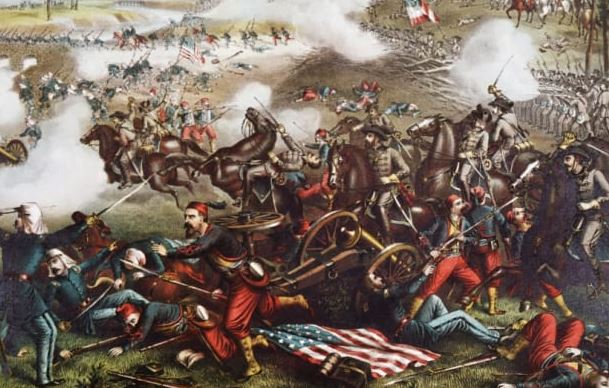Introduction
After years of simmering conflict between the northern and southern states over slavery, state’s rights, and westward migration, the American Civil War broke out in 1861. When Abraham Lincoln was elected president in 1860, seven southern states seceded to form the Confederate States of America, and four more states quickly joined them. Confederate capitulation in 1865 marked the end of the Civil War, commonly known as the War Between the States. Approximately 620,000 of the 2.4 million soldiers who were involved in the War died, millions more were maimed, and most of the South was left in ruins, making it the most expensive and deadly war ever waged on American territory.

The Civil War’s Core Causes
The northern and southern parts of the United States had fundamentally different economies in the middle of the 19th century, even though the country was going through a period of rapid growth.
While agriculture in the North was largely confined to small scale farms and manufacturing and industry were well-established, the South’s economy was dependent on a system of large-scale farming that required the labour of Black enslaved people to grow specific crops, mainly cotton and tobacco.
Many southerners believed that the continuation of slavery in America and hence the foundation of their economy was in jeopardy as a result of growing abolitionist sentiment in the North following the 1830s and northern hostility to slavery’s expansion into the new western territories.
In 1854, the U.S. Congress passed the Kansas-Nebraska Act, which essentially opened all new territories to slavery by asserting the rule of popular sovereignty over congressional edict. Pro- and anti-slavery forces struggled violently in Bleeding Kansas while opposition to the act in the North led to the formation of the Republican Party, a new political entity based on the principle of opposing slavery’s extension into the western territories. After the Supreme Court’s ruling in the Dred Scott case (1857) confirmed the legality of slavery in the territories, the abolitionist John Brown’s raid at Harper’s Ferry in 1859 convinced more and more southerners that their northern neighbours were bent on the destruction of the peculiar institution that sustained them. Abraham Lincoln’s election in November 1860 was the final straw, and within three months seven southern states- South Carolina, Mississippi, Florida, Alabama, Georgia, Louisiana and Texas had seceded from the United States.
The Kansas-Nebraska Act, which was passed by the US Congress in 1854 and effectively allowed slavery in all new territories, established the supremacy of popular sovereignty over congressional decree.
While opposition to the practise in the North resulted in the founding of the Republican Party, a new political organisation founded on the principle of opposing slavery’s development into the western territories, pro and anti-slavery groups engaged in deadly conflict in “Bleeding Kansas”.The abolitionist John Brown’s raid at Harper’s Ferry in 1859 convinced more and more southerners that their northern neighbours were determined to destroy the peculiar institution that sustained them after the Supreme Court’s decision in the Dred Scott case (1857) upheld the legality of slavery in the territories. Election of Abraham Lincoln was in November 1860 .
Start of the American Civil War (1861)
Confederate soldiers were posing a threat to the federally held Fort Sumter in Charleston, South Carolina, even as Lincoln assumed office in March 1861. The Civil War began on April 12, when Confederate artillery fired its opening salvos after Lincoln gave the order for a fleet to resupply Sumter. After fewer than two days of bombardment, Major Robert Anderson, the fort’s commander, capitulated, handing control of the fort over to Pierre G.T. Beauregard and the Confederate soldiers. Following Fort Sumter, four more southern states – Virginia, Arkansas, North Carolina, and Tennessee joined the Confederacy. Border slave states like Missouri, Kentucky, and Maryland did not secede, but a large portion of their populace supported the Confederacy.
Despite the fact that the 23 states of the Union appeared to have had a huge edge in population, manufacturing (including the production of armaments), and railroad building, the Confederates had a solid military heritage and some of the best troops and commanders in the country. Additionally, they had a cause in which they strongly believed the preservation of their long standing customs and institutions, foremost among them slavery.

